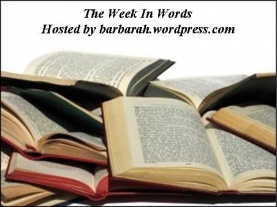Yesterday being the first of January, I also knew it to be the first of the L.M. Montgomery Reading Challenge. I duly began Anne of Green Gables, which I intend to re-read, along with its sequel Anne of Avonlea over the course of this month. (I also intend to complete at least one additional article of clothing for my doll wardrobe based on the Anne series).
Early on in Anne of Green Gables I came across a passage that’s never really stuck out to me before, but which certainly stuck out this time. Marilla is explaining to Mrs. Lynde why she agreed to adopt a boy from Nova Scotia, despite the risks:
“And as for risk, there’s risks in pretty near everything a body does in this world. There’s risks in people’s having children of their own if it comes to that–they don’t always turn out well.
It’s true. Everything in this world comes with risks. It’s risky to adopt, but it’s also risky to have one’s own children. It’s risky to fly, but it’s also risky to drive. Exercise is risky, but so is being sedentary.
This life is full of risks, some small and some large.
Not that our emotions always know which is which.
Most of us probably recognize that driving a car is quite risky, just as risky as flying in an airplane. But that doesn’t stop some of us from being massively fearful of flying while being completely nonchalant about driving.
Many expressed terror when I told them I was skydiving last year–when, in fact, skydiving isn’t anywhere near as risky (statistically) as many presume it to be.
And then there’s the risk of not taking risks. I read a study once (that I probably have bookmarked or saved somewhere but don’t know where) that suggests that people who do not die taking risks live longer for having taken them. It seems that calculated risk taking can actually, paradoxically, be good for us.
So how does one determine which risks to take and which to avoid?
Marilla took this one out of a sense of duty, at first:
“I don’t deny there’s something in what you say, Rachel. I’ve had some qualms myself. But Matthew was terrible set on it. I could see that, so I gave in. It’s so seldom Matthew sets his mind on anything that when he does I always feel it’s my duty to give in.”
Later, when things didn’t turn out as expected, she made the final decision to keep Anne when she realized that if she chose the lest risky option for herself (giving Anne up), it would mean great risk for Anne (living with “that Blewett woman”).
Ultimately, I think, the Christian has the perfect grid for evaluating risk-taking.
As I taught my Sunday School children yesterday, God is sovereign. Sovereign means that He is the ruler, in control of all things. We discussed how this is a scary thing for the person who does not trust in Jesus, because God hates sin. But we also discussed how this is good news for the person who trusts in Jesus–because God has already said what His plans are for the people who trust in Jesus. God has said that His plan is to conform them into the image of Christ.
So the Christian can evaluate every risk by asking the question: “Has God commanded it?” If so, whatever the earthly risks, there is a heavenly benefit far surpassing: that the believer will be conformed to the image of Christ. Beyond this, the believer can evaluate risks using the grid of I Corinthians 6:12 and 10:23-24: Is this permissible? Is this beneficial? Is this going to bring me under its mastery? Is it going to do good for another?
Presuming that a risk fits those criterion (it’s permissible, beneficial, and does good for another while not bringing you under its own mastery), it is a worthwhile risk.
After all, as my pastor occasionally says, “We’re immortal until God decides our life is over.”

 Don’t forget to take a look at Barbara H’s meme “The Week in Words”, where bloggers collect quotes they’ve read throughout the week–and Carrie’s L.M. Montgomery Reading Challenge to see what everyone else is working on.
Don’t forget to take a look at Barbara H’s meme “The Week in Words”, where bloggers collect quotes they’ve read throughout the week–and Carrie’s L.M. Montgomery Reading Challenge to see what everyone else is working on.

